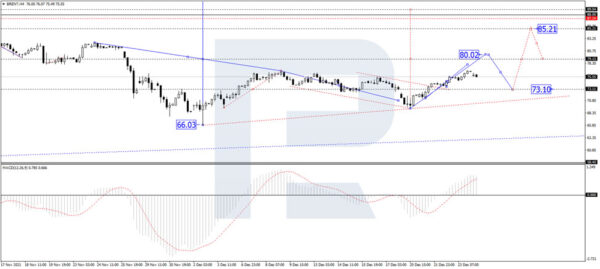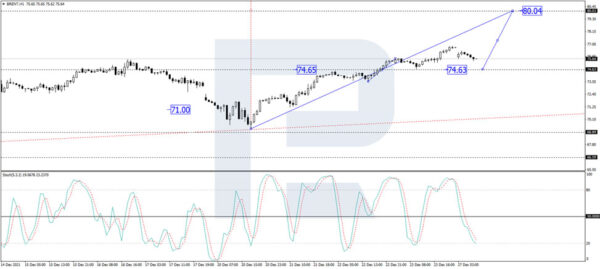Early in the final week of December, the Brent price is looking quite stable; the asset is trading at $76 and it can be assumed that the situation won’t dramatically change until the end of the year.
However, in January 2022, global tendencies may force oil prices to go down. First of all, it’s a disposition towards the oil supply surplus, which may occur early in the year and will become a trend for the whole 12 months. Secondly, the pandemic didn’t go anywhere: during the Christmas holidays, a lot of flights in the US were cancelled due to a possible upsurge in the number of new coronavirus cases.
On 4 January, OPEC+ will have another meeting and the cartel is highly likely to keep the current output parameters for February intact. The total daily output will increase by 400 thousand barrels every month.
In fact, the supply is already significantly increasing while the demand remains stable.
In the H4 chart, after rebounding from 74.00, Brent is growing towards 80.00 and forming the third wave within the uptrend; right now, the asset is correcting and may reach 74.65. After that, the instrument may resume trading upwards to reach 80.00 and then start another correction to return to 74.65. Later, the market may form one more ascending structure to break 80.00 and then continue growing with the short-term target at 85.00. From the technical point of view, this scenario is confirmed by MACD Oscillator: its signal line is moving above 0 inside the histogram area, thus indicating a further uptrend in the price chart, while the line may continue its movement to reach new highs.
As we can see in the H1 chart, after forming a new consolidation range around 74.60 and breaking it to the upside, Brent continues trading upwards and has already reached 76.83. Today, the asset may correct to test 74.63 from above and then resume growing with the target at 85.00. From the technical point of view, this idea is confirmed by the Stochastic Oscillator: its signal line is moving at 20. Later, the line may rebound from this level and move upwards to break 50. After that, it may continue growing to reach 80.




 Signal2forex.com - Best Forex robots and signals
Signal2forex.com - Best Forex robots and signals




